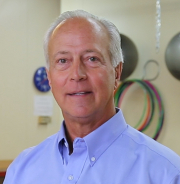It is well documented that most golf injuries involve the lead side of the golfer. For a right handed golfer that would be the left side of the body and the right side of the body for a left handed golfer. Injuries can occur anywhere on the lead side but more commonly occur in the lead shoulder, forearm, wrist, hip and leg.
A very stubborn and uncomfortable injury is to the lead leg. Often from the overuse of long practice sessions and hitting numerous balls pain in this area will have a direct effect on swing mechanics. Also once injured it is difficult to protect this area from the magnitude of rotational and compressive forces that are put on the lead ankle and foot. The lead foot and ankle are the point of support and anchor rotational forces coming from the shoulders, torso and hips. The large muscle groups in these areas generate forces into the lead leg that approach 6-8 times the golfers body weight. If not trained to handle this level of demand the lead leg will have a difficult time controlling such forces.
Structures that must be evaluated in the lead leg involve the ankle and foot. Important are the peronneal (fibularis) musculature, ligaments in the lateral ankle, tarsal joint elements of the medial ankle and overall foot mechanics. Flat footedness and high arches also have to be addressed.
Injuries to any of these structures will cause mobility and stability compensations to occur at the knee, hip, lower back, torso and shoulder. Poor swing mechanics will likely accommodate the problem and performance will suffer. Much to consider for an area that golfers take for granted and assume can handle the forces they generate.

